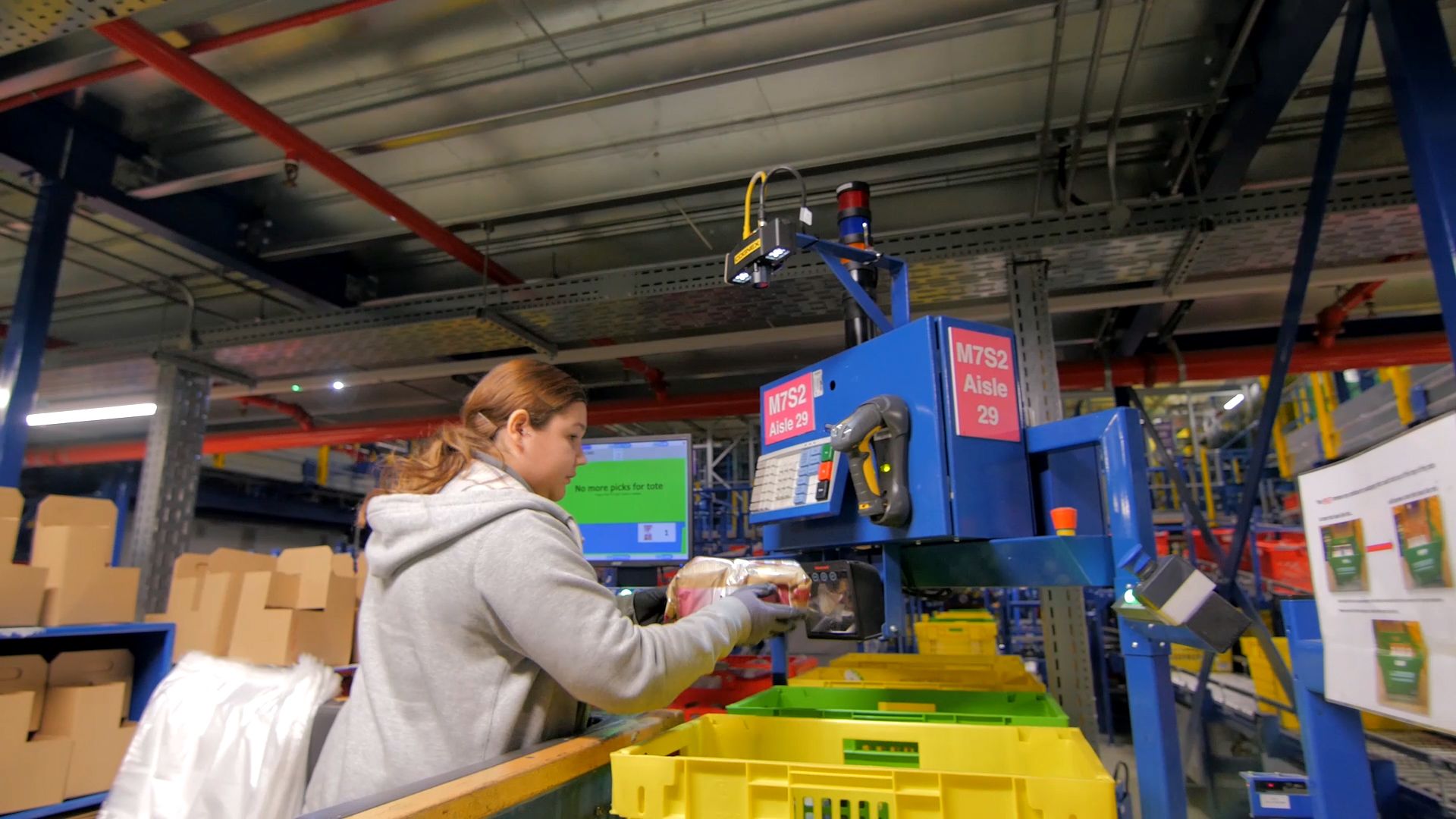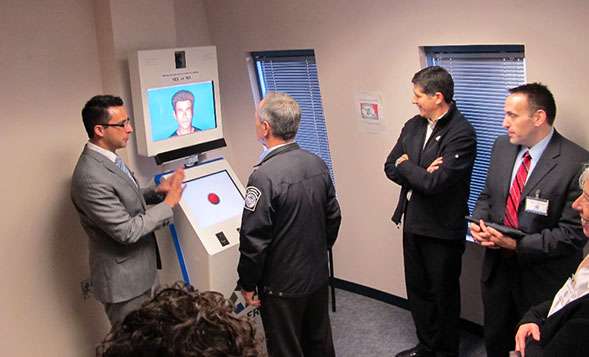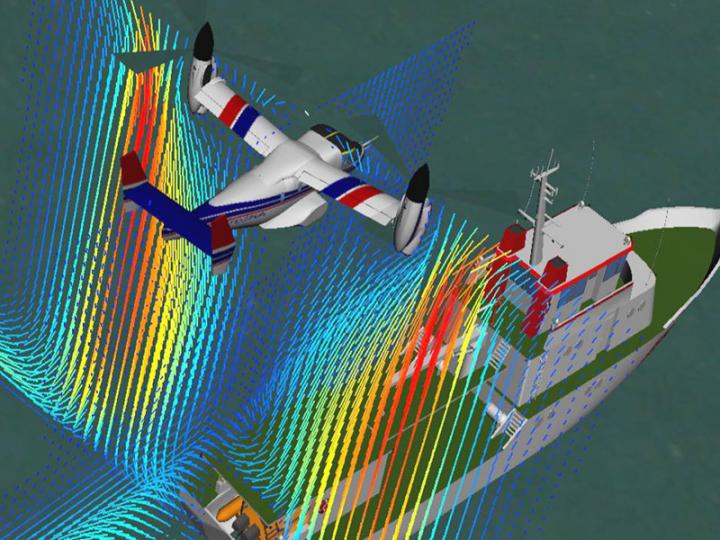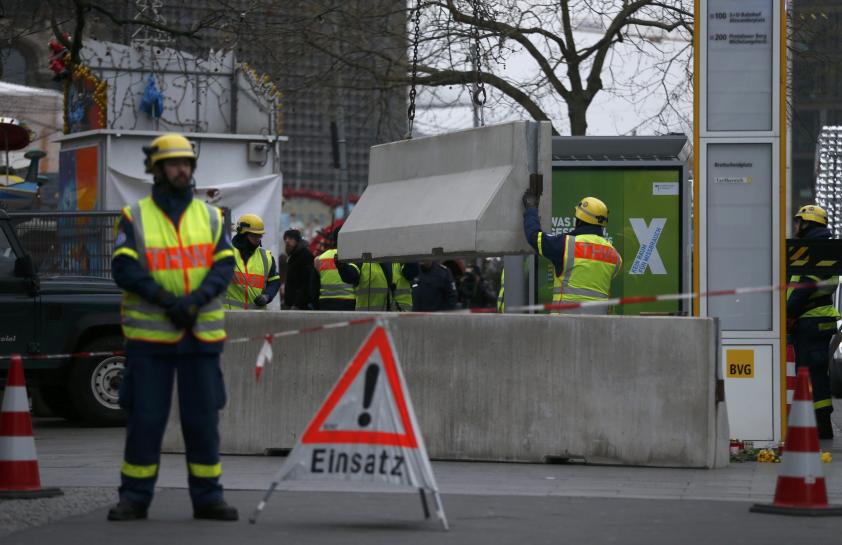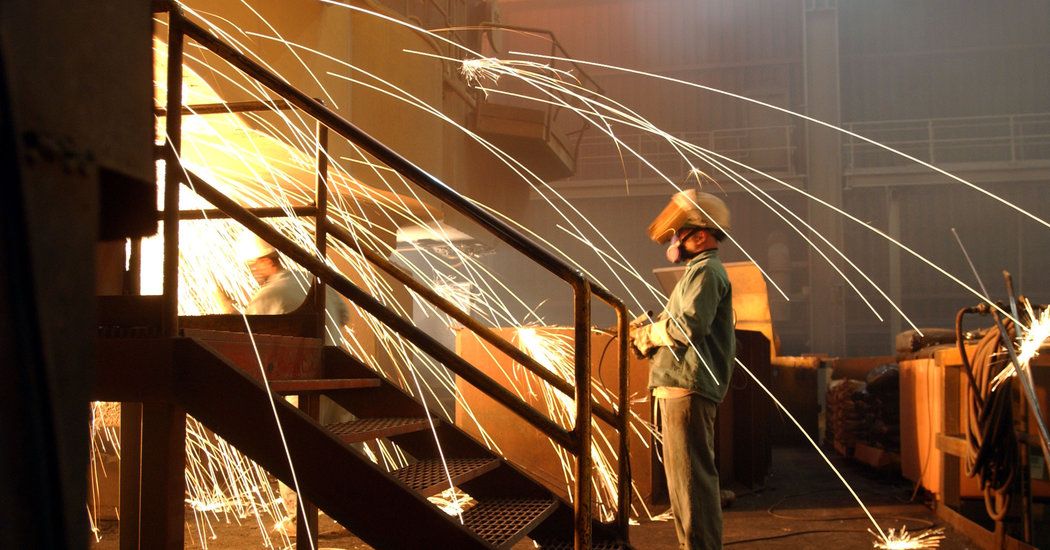Archive for the ‘transportation’ category: Page 515
Dec 28, 2016
The lie-detecting security kiosk of the future
Posted by Shane Hinshaw in categories: robotics/AI, security, transportation
When you engage in international travel, you may one day find yourself face-to-face with border security that is polite, bilingual and responsive—and robotic.
The Automated Virtual Agent for Truth Assessments in Real Time (AVATAR) is currently being tested in conjunction with the Canadian Border Services Agency (CBSA) to help border security agents determine whether travelers coming into Canada may have undisclosed motives for entering the country.
“AVATAR is a kiosk, much like an airport check-in or grocery store self-checkout kiosk,” said San Diego State University management information systems professor Aaron Elkins. “However, this kiosk has a face on the screen that asks questions of travelers and can detect changes in physiology and behavior during the interview. The system can detect changes in the eyes, voice, gestures and posture to determine potential risk. It can even tell when you’re curling your toes.”
Dec 27, 2016
This truck is the size of a house and doesn’t have a driver
Posted by Shane Hinshaw in categories: robotics/AI, transportation
Mining companies are rolling out autonomous trucks, drills, and trains, which will boost efficiency but also reduce the need for human employees.
Dec 27, 2016
Tesla Autopilot’s new radar technology predicts an accident caught on dashcam;
Posted by Amnon H. Eden in categories: robotics/AI, sustainability, transportation
The video of an accident on the Autobahn in the Netherlands caught on the dashcam of a Tesla Model X shows the Autopilot’s forward collision warning predicting an accident before it could be detected by the driver.
With the release of Tesla’s version 8.0 software update in September, the automaker announced a new radar processing technology that was directly pushed over-the-air to all its vehicles equipped with the first generation Autopilot hardware.
Dec 26, 2016
Realistic training for extreme flight conditions
Posted by Karen Hurst in category: transportation
Missions at sea, in mountainous regions or close to skyscrapers are extremely risky for helicopter pilots. The turbulent air flows near oil rigs, ships, cliffs and tall buildings can throw a helicopter off balance and cause a crash. To provide pilots with optimal preparation for these challenging conditions, engineers at the Technical University of Munich (TUM) are developing new simulation software.
Providing helicopter pilots with the best possible preparation for extreme situations: That is the goal of the new simulation software being developed by researchers working at TUM’s Chair of Helicopter Technology. For the first time, real-time computational analysis will be implemented for both fluid mechanics and flight dynamics. “Until now, flight simulators have not adequately reflected the reality of flying in close proximity to large objects,” says Dr. Juergen Rauleder. “The problem is that, when it comes to wind conditions and the response of the helicopter, existing programs follow a rigid pattern. That means that local variations and changing conditions are not taken into account — unless the entire flow environment is known in advance.”
But it is the unforeseen air flows that can be the most treacherous: For example, a moving ship causes air turbulence and sudden local shifts in wind speed known by specialists as “ship airwake flow”. It changes continually through wave action and fluctuating inflow conditions. In addition, turbulence occurs near the deck, the bridge and other ship structures. As a helicopter approaches the ship, there is interference between these air currents and the flow produced by the rotors. Conditions near a mountain slope or next to high buildings are similarly complicated. In all of these cases, the helicopter’s flight characteristics are influenced by complex and overlapping aerodynamic effects.
Dec 26, 2016
DARPA races offer model for government-industry relations
Posted by Karen Hurst in categories: economics, energy, government, transportation
The relationship between the government and the auto industry is about to be transformed. But into what?
Eight years ago, that relationship hardly could have been more awkward. Two of the Detroit 3 were begging Congress for a lifeline. The federal government would later fire General Motors’ CEO, orchestrate a bankruptcy of GM and Chrysler and emerge as a shareholder in both — a highly un-American arrangement that would lead to a successful recovery, yes, but also lingering tensions and shame.
The relationship is different now, but it’s not necessarily better. The Obama administration shed the stake in the car companies but has wrapped its tentacles more tightly around the industry in many ways, including strict consent decrees to monitor safety and tough targets for fuel economy and greenhouse gas emissions.
Continue reading “DARPA races offer model for government-industry relations” »
Dec 25, 2016
Imperial College of London makes world’s most heat resistant material at 4232 kelvin
Posted by Klaus Baldauf in categories: nuclear energy, space, transportation
Being able to withstand temperatures of nearly 4000°C could pave the way for both materials to be used in ever more extreme environments, such as in heat resistant shielding for the next generation of hypersonic space vehicles.
Tantalum carbide (TaC) and hafnium carbide (HfC) are refractory ceramics, meaning they are extraordinarily resistant to heat. Their ability to withstand extremely harsh environments means that refractory ceramics could be used in thermal protection systems on high-speed vehicles and as fuel cladding in the super-heated environments of nuclear reactors. However, there hasn’t been the technology available to test the melting point of TaC and HfC in the lab to determine how truly extreme an environment they could function in.
Dec 22, 2016
Can technology stop another truck attack?
Posted by Karen Hurst in categories: security, transportation
LONDON The attack on a Berlin Christmas market showed the devastation that can be wrought by the simple act of driving a truck into crowds, and the problems in preventing another massacre.
The attack in Germany on Monday, in which 11 people were killed by the truck in addition to the murder of the Polish driver, mirrored a militant raid in the French city of Nice in July that killed 86.
Hauliers increasingly track their vehicles in real time but security experts say the technology cannot be used to stop an attack if a lorry has been hijacked to be used as a weapon.
Dec 21, 2016
AI could boost productivity but increase wealth inequality, White House says
Posted by Bryan Gatton in categories: business, economics, employment, robotics/AI, transportation
Artificial intelligence (AI) technology has the potential to boost productivity but increase wealth inequality and wipe out millions of jobs, a research report by the White House claimed on Tuesday. With an increasing number of industries set to be affected by automation technology in the coming years, jobs could be displaced — a fear that has been voiced by academics and business leaders. Auto companies are developing driverless cars, and factories are seeing an increased use of robotics.
Because AI is not a single technology, but rather a collection of technologies that are applied to specific tasks, the effects of AI will be felt unevenly through the economy. Some tasks will be more easily automated than others, and some jobs will be affected more than others — both negatively and positively.
Researchers around the world have given varying estimates about the size of potential job losses. One recent estimate by Forrester suggests 6 percent of jobs in the next five years could be wiped out thanks to AI. The White House report cites a 2013 study from Oxford University suggesting that 47 percent of U.S. jobs are at risk because of AI. The report suggests that lower-skilled and less-educated workers could feel the heat the most. Overall, the White House report advocates a three-pronged approach to preparing for a future remade by AI that includes investing in AI for its benefits, training Americans for the jobs of the future and helping workers make the transition to new positions.
Continue reading “AI could boost productivity but increase wealth inequality, White House says” »
Dec 21, 2016
The Long-Term Jobs Killer Is Not China. It’s Automation
Posted by Scott Davis in categories: employment, robotics/AI, transportation
Even in the best case, automation leaves the first generation of workers it displaces in a lurch because they usually don’t have the skills to do new and more complex tasks, Mr. Acemoglu found in a paper published in May.
Robert Stilwell, 35, of Evansville, Ind., is one of them. He did not graduate from high school and worked in factories building parts for tools and cars, wrapping them up and loading them onto trucks. After he was laid off, he got a job as a convenience store cashier, which pays a lot less.
“I used to have a really good job, and I liked the people I worked with — until it got overtaken by a machine, and then I was let go,” he said.
Continue reading “The Long-Term Jobs Killer Is Not China. It’s Automation” »
